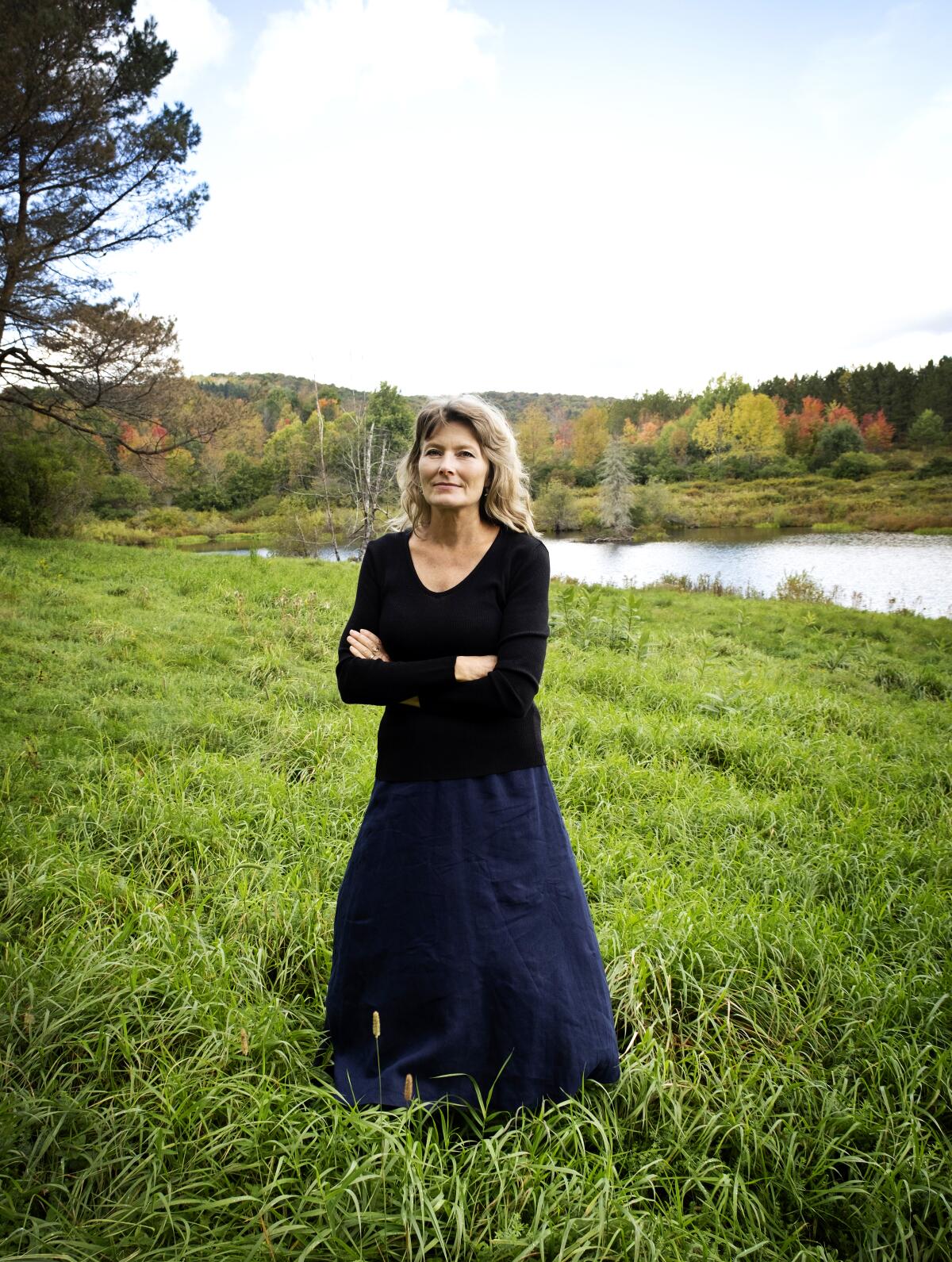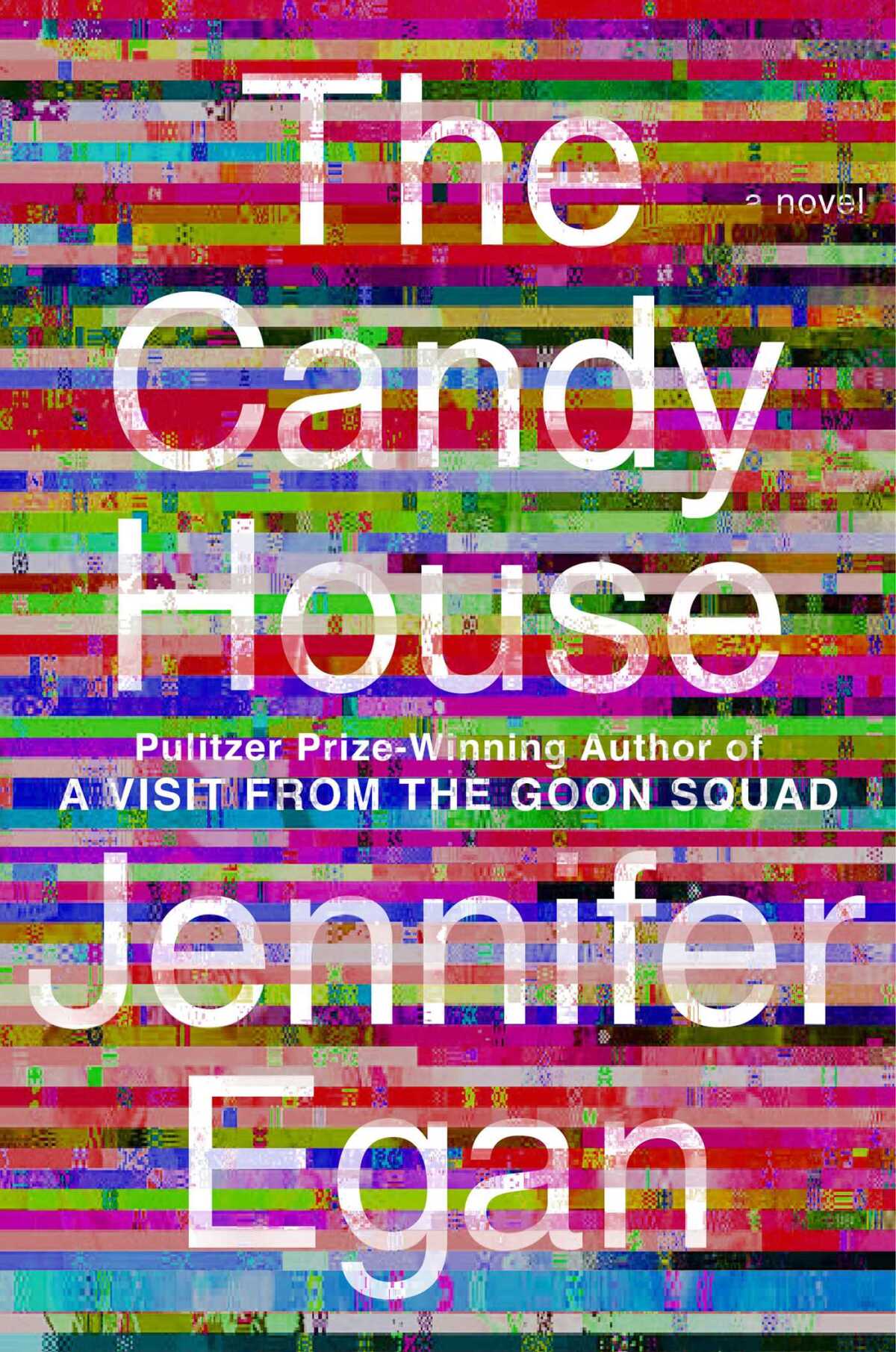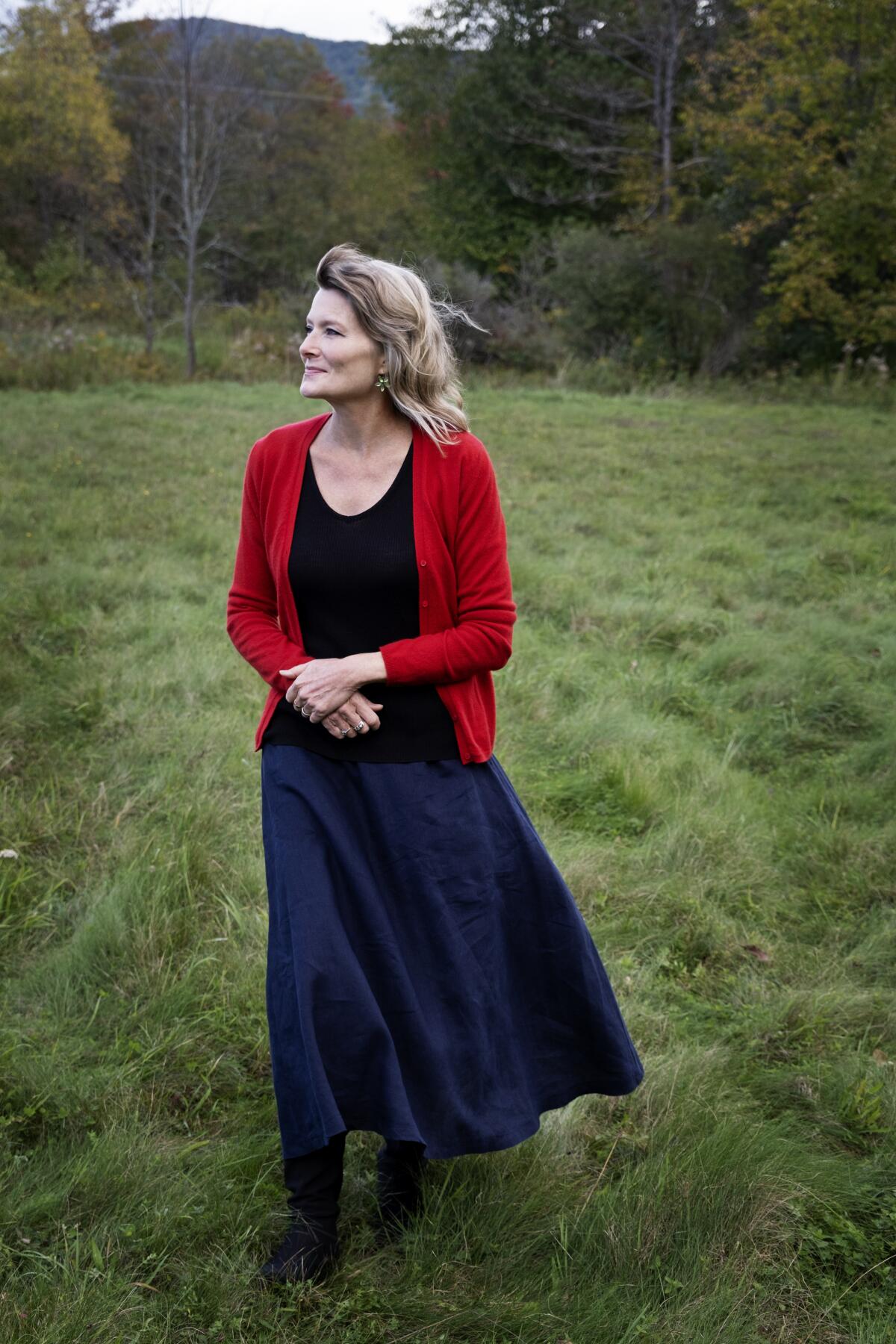Sign up for our Book Club newsletter
Get the latest news, events and more from the Los Angeles Times Book Club, and help us get L.A. reading and talking.
You may occasionally receive promotional content from the Los Angeles Times.

On the Shelf
'The Candy House'
By Jennifer Egan
Scribner: 352 pages, $28
If you buy books linked on our site, The Times may earn a commission from Bookshop.org, whose fees support independent bookstores.
Iâm supposed to note Jennifer Eganâs age and appearance (59, incredibly lovely). Sheâs warm and funny, deeply charming. We met on one of those March days that offered that first breath of spring. We had a tight window â she had to get home to her mom who had just flown in â and afterward I worried Iâd asked none of the right profile questions. I had no idea how she felt about being the mother of young adult sons during the pandemic. I didnât ask where she writes or what she eats when she does. Instead, we walked circles around Manhattanâs East Village, talking about what fiction might be worth.
In a moment of cultural wariness of the novel â evident in the proliferation of narrowly constructed autofiction and the supremacy of television â Egan remains a true believer. Itâs the thing that struck me, rereading her work. Her books are filled with artifice, devices, doubles, spies and sinking ships. âI believe in novels very much,â she said. âI also really know that sadness, loving something whose cultural power is waning, but Iâm not giving up.â
The rare writer for whom each book has been an entirely different gambit, Egan has continually worked to stretch what both the novel and the novelist are capable of. Sheâs written a coming-of-age and a gothic novel. She once described the image she held in her mind while writing her novel âLook at Me,â about a model, a teenager and a terrorist, as a figure eight. âManhattan Beach,â the 2017 historical novel that plays it straightest â her uncle loved it; âI have never heard from him about other booksâ â felt like a departure because it was so familiar. But for Egan, it was still a formal stretch and, she says, the toughest to write.
Yet it was her 2010 Pulitzer Prize-winning novel-in-stories âA Visit From the Goon Squadâ that catapulted an already very good career into the stratosphere. Perhaps best known (at least in circles of writers) for its chapter-as-PowerPoint presentation, it felt exciting not because slideshows were particularly new in 2010 but because the book was able to synthesize this oddity of life back into art. Critics and readers love to pronounce the death of the novel, but âGoon Squadâ â with all its formal acrobatics and jumps in time and point of view, imbued so fully with our own yearnings â emphasized the formâs vitality.
âThe Candy House,â out this week, expands the world of âGoon Squad.â Itâs part sequel and part prequel, but itâs not a return; Egan never left. An early chapter dates back to 2010, she told me: âLulu the Spyâ was published by the New Yorker as âBlack Boxâ in 2012. And for a year and a half, she worked on âManhattan Beachâ and âCandy Houseâ simultaneously â until âit became clear that âManhattan Beachâ would require all of my time.â
While the idea of a sequel might feel surprising to those who associate Eganâs work with innovation, the fact that she wanted to dive deeper into the world that proved the most elastic makes a good amount of sense. Returning to the same people gave her room to stretch them too: âIâm really interested in the ways that we are such a mix of contradictory qualities; the very same person is heroic and terribly selfish.â
âCandy Houseâ fleshes out characters we only got glimpses of in âGoon Squad,â but it also offered Egan the opportunity to write a spy chapter, invent a new technology and build stories via emails and tweets. Itâs worth noting that â unlike recent books that have sought to replicate the very online experience â none of these read like tweets or emails: They read like story. This is the thrill of both âGoon Squadâ and âCandy Houseâ: They exploit this new and strange material, but their greatest pleasures feel particular to books.

Another novel twist in the service of old-fashioned storytelling comes in âCandy Houseâsâ sci-fi flourish. In âGoon Squad,â Bix Bouton was the Black boyfriend to Lizzie; evading her racist parents, he wandered the city and eventually met up with two much more prominent characters on a fateful day. In the new novel, Bix, now center stage, invents a panopticon, Own Your Unconscious, which allows one to enter other peopleâs memories. In Eganâs hands, itâs a red herring, proof that the dream of knowing all is a hollow illusion. Itâs not dystopian exactly â itâs too fun and fleshy for that â but it is, in a way, a warning.
âI guess to do something fully, you have to believe it will change everything,â Egan said. âAnd I, for some reason, have a delusionary ability to think that about what Iâm working on.â I asked how she deals with the disappointment of returning to a world unchanged by her work. âItâs just the feeling of getting it right.â
For Egan, getting it right has to do with fulfilling a readerâs craving â the word âcravingâ appears in the first line of âCandy Houseâ and the last chapter of âGoon Squadâ â for mystery and imagination, as opposed to the barrage of information, the much emptier imagistic titillations, that we find much easier to access.
Our walk led us to the East River, where construction forced us across a series of footbridges. Egan seemed to stifle a desire to pick up pieces of trash. We kept circling the same constellation of words: imagination, information, pleasure, authenticity. She told me about the âlayers of readersâ she uses to make sure she is offering the intended experience. âMy goal is to give pleasure, honestly,â she said. âI love hearing that people miss subway stopsâ reading her work.
In addition to fiction, Egan believes in another slightly outmoded concept: the human imagination. âI think we can do anything,â she said. She was talking about story but also about vaccines and antibiotics. As one of those novelists who has not always had as much faith in fiction or in people, I pressed her to explain. Abashedly, I brought up a podcast Iâd been listening to, about Ukraine. (Egan is not a big fan of podcasts; she listens mostly to 18th century novels.) Iâd heard the historian Timothy Snyder talking about the particularity of this moment having less to do with impending catastrophe than with the feeling of being doomed to stagnation, unable to imagine what else might be possible.

âOne of the paradoxes that led me into the âCandy Houseâ is the fact that we seem to not be able to predict anything,â she said. âDespite the amount of information we have, we didnât know Trump was going to get elected. We didnât know 9/11 was going to happen.â The paradox is the glut of information and the dearth of observation. âI think the media saturation ⌠creates a distortion, which is you need to be the center of a universe. You need to create a universe that revolves around you. And if you donât succeed at that, you are invisible and powerless.â
This felt connected to so much recent fiction focused on the âI,â but also to the self-torture of scrolling oneâs phone in the middle of the night because what if one more tweet might somehow tell us how we might survive?
Thereâs a character in âCandy Houseâ who yells randomly in public in an attempt to access authenticity, to force people to more fully inhabit the world. âHis goal was to create a disruption so extreme that it jolted genuine responses,â Egan writes. This feels close to what she does in her work: not to mirror the world, but to harness the tremendous power of fiction, in all its guises, in order to force us to stop and look at it.
âOne thing I really have felt as I get older is that, in the end, art is the thing that lasts,â she said, âbecause it ends up being the artifact. Itâs the seashells that are left after everything is gone. I mean, how much do we know about the information of Hadrianâs reign in Rome? But the art is there.â Itâs the feeling that remains.
Strong is a critic and the author, most recently, of the novel âWant.â
Sign up for our Book Club newsletter
Get the latest news, events and more from the Los Angeles Times Book Club, and help us get L.A. reading and talking.
You may occasionally receive promotional content from the Los Angeles Times.